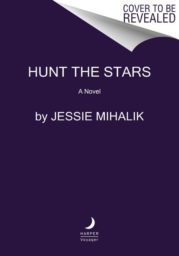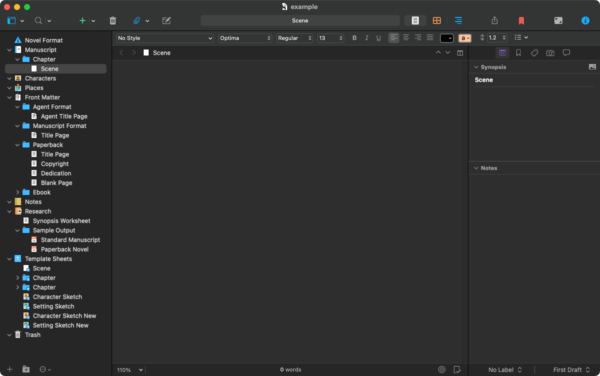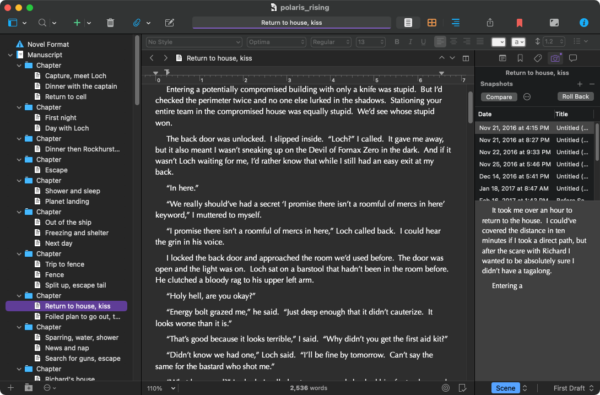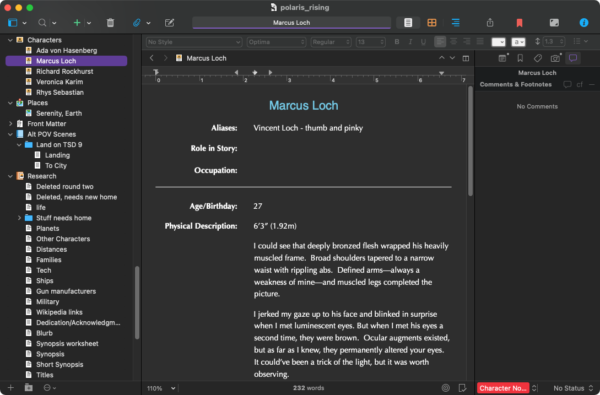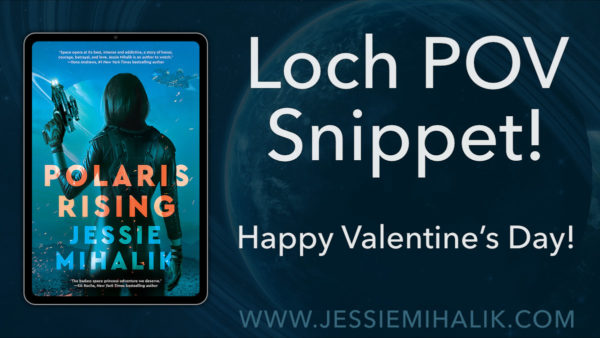Hunt the Stars Edits Are Done! Here’s a Tiny Snippet!
This morning, I sent off my edits for Hunt the Stars. I added about 6k words, bringing the total manuscript to just under 113k, which falls right between Aurora Blazing and Chaos Reigning.
This was a pretty fast edit for me because I usually plan for about a month, and I finished in under two weeks. I’ve now read this story more times than anyone should, and I still love it, so I hope you all will, too.
Bree, half of writing duo Kit Rocha, read an early copy (before I was done editing, even!) and had a few very nice things to say about it over on Twitter, including, “Ok I just finished my early copy of Hunt the Stars by Jessie Mihalik and somehow it’s my favorite thing she’s written yet, it’s AMAZING…” which made my whole weekend, y’all. 💕😭
Here’s a little snippet of the first chapter to celebrate turning in edits. This hasn’t been finally approved or copyedited, so it’s still subject to change, but I won’t tell if you don’t. :)
And, in case you missed it, HtS is now available for preorder. The cover isn’t up yet, but I’ve seen a rough draft and it is IN-CRED-I-BLE! 😍 I can’t wait to share!
Preorder:
Amazon | Barnes & Noble | Apple Books | Google Play | Kobo | IndieBound
I leaned against my ship’s cargo ramp and watched with narrowed eyes as four soldiers in Valovian armor stalked through the landing bay. This was a human station in human space—Valoffs shouldn’t be here. Yes, we were at peace—for now—but both sides had made it clear that they preferred it when everyone stayed in their own sectors.
The soldiers moved from ship to ship. At each, the group leader spoke to the ship’s captain for a few minutes before continuing on. They moved like Valoffs rather than like humans wearing stolen armor, so I raised my mental shields as they approached. It wasn’t easy for a human to learn to shield against Valovian abilities because we had no natural defenses, but I’d learned the hard way during the war. Certain death provided excellent motivation.
The leader was male: tall and muscular, with thick, black hair, dark eyes, and skin a shade or two lighter than my own golden tan. He looked vaguely familiar, but I couldn’t immediately place him. He was encased in layers of synthetic black armor from neck to feet, and I knew from experience that it would deflect all but the strongest plas pistols and blades. It had exactly two weaknesses, and you had to be within reach to exploit either of them.
The group stopped several paces away, but even at this distance, their leader looked almost human. In general, Valoffs had a wider variety of hair and skin color and were a little taller than humans, with a slightly finer bone structure. However, their eyes were the biggest giveaway. Their irises were often threaded with multiple vibrant colors, and they had better-than-human night vision. They spent a lot of time in the dark—days on Valovia were only ten hours long.
…Hunt the Stars Edits Are Done! Here’s a Tiny Snippet!Read More »
